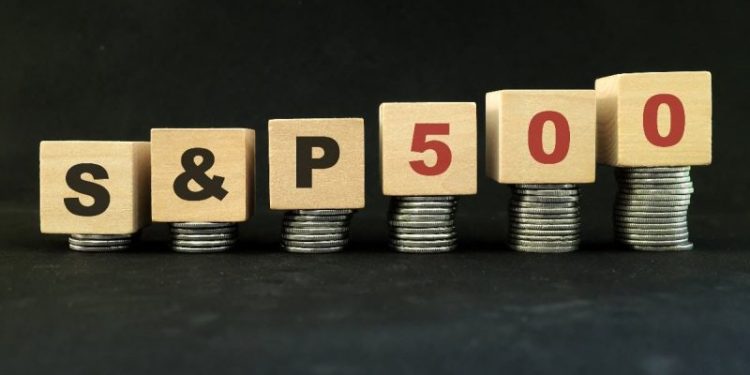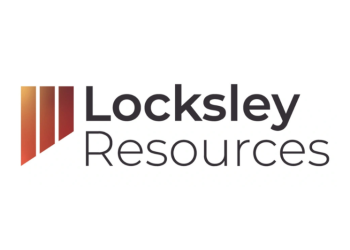How the S&P 500’s Gain Shows a Change in Market Sentiment
Thursday saw a dramatic turnaround on Wall Street, with the S&P 500 climbing 2.3%—its best performance since 2022. This surge followed better-than-expected jobless claims data, alleviating fears about the economy’s sluggishness.
Nvidia and other Big Tech stocks led the way as the Dow Jones Industrial Average increased by 1.8% or 683 points. The Nasdaq composite increased by 2.9%.
Treasury yields increased in the stock market. This suggests investors are less worried about the economy. Fewer American workers filed for unemployment last week. The figure exceeded economists’ expectations.
The worst unemployment data from last week heightened fears. Investors worried that the Federal Reserve kept rates too high to fight inflation.
That contributed to the global market panic, as did the Bank of Japan’s rate hike, which caused havoc by upsetting a hedge fund favourite trade.
At its lowest point, the S&P 500 was down almost 10% from its record set last month, at least thus far. These kinds of declines on Wall Street are commonplace, with “corrections” of 10% occurring annually or biannually. The rating is back within roughly 6% of its record following Thursday’s surge.
Effect of the S&P 500 Decline
The rate at which this decline occurred was especially alarming. The S&P 500’s measure of investor protection against future declines for a brief period reached its highest point since the 2020 COVID-19 crash.
BNP Paribas strategists think the market’s swings resemble a “positioning-driven crash” rather than a long-term recession. They attribute this to investors piling into trades and then selling off quickly.
They claim that rather than the global financial crisis of 2008 or the pandemic-related recession of 2020, it appears to be more akin to the 2010 “flash crash.”
Major S&P 500 Shifters
Monolithic Power Systems
Stocks like Monolithic Power Systems and Eli Lilly saw substantial gains, while companies such as McKesson and Monster Beverage faced declines due to disappointing earnings reports. The bond market also reacted, with yields rising in response to improved jobless claims.
Parker-Hannifin
Parker Hannifin (PH), a manufacturer of electronic technology, saw a 10.8% increase in shares. Despite challenges in diversified industries, the motion and control technologies provider exceeded sales and profit projections. Strong aerospace sales helped. Parker Hannifin’s aviation business saw an increase in sales and margins due to the strength of the aftermarket.
Eli Lilly
Following the drugmaker’s release of higher-than-expected second-quarter sales and profits, shares of Eli Lilly (LLY) surged by 9.5%. Strong performance supported by sales of Lilly’s diabetes and weight-loss therapies Zepbound and Mounjaro.
The company also increased its full-year revenue and earnings outlook by promoting production growth to enhance its supply of well-liked medications.
McKesson
Following the distribution of medical supplies, McKesson (MCK) saw its shares plummet 11.3% on Thursday, the biggest decline of any S&P 500 stock. The company’s quarterly sales estimates should have been included.
McKesson attributed the revenue shortfall to fewer product launches and declining demand for COVID-19 test strips. A major customer switched from Humira to a biosimilar.
Monster Beverage
Monster Beverage’s (MNST) shares dropped 10.9% due to lower-than-expected earnings. The business claimed decreased foot traffic in convenience stores has pressured energy drink sales.
Warner Bros Discovery
After Warner Bros. Discovery (WBD) revealed a second-quarter loss of almost $10 billion, more than analysts had predicted, the company’s shares fell 8.9%. A $9.1 billion non-cash asset impairment charge, which reflected a write-down of the company’s cable networks’ value due to disruptions from streaming services, was included in the results.
Other S&P 500 Movers
After revealing Q2 modified net revenue of $826.5 million, which beat the consensus estimate of $820.2 million, Viatris (VTRS) is up more than +8%.
After reporting Q2 adjusted EPS of 43 cents, which beat the consensus of 37 cents, Datadog (DDOG) is up more than +5%. The company also increased its full-year altered EPS estimate to $1.62-$1.66 from an earlier estimate of $151-$1.57.
Zillow Group (ZG) rose more than +17% following the release of its Q2 revenue report, which came in well over the $538.2 million consensus.
After revealing Q2 net sales of $1.25 billion, which exceeded the consensus estimate of $1.09 billion, SharkNinja surged more than +14%.
Following BMO Capital Markets’ upgrade of Vornado Realty Trust (VNO) to surpass market performance with a $40 price target, the stock is now up more than +2%.
After estimating it will open 150–165 new stores, Dutch Bros (BROS) is down more than 23% at the lower part of its former guidance.
Following the release of Q2 revenue of $362.9 million, which was lower than the consensus estimate of $389.5 million, Sarepta Therapeutics declined more than -3%.
Following the announcement that Spruce Point Capital Management has a short position in Zebra Technologies (ZBRA), the stock is down more than 1%.
Interest Rate Information
The 10-year T-notes for September are currently down 9 ticks. The yield on a 10-year Treasury note is now 4.003%, up +6.0 bps.
T-notes lost their overnight gains and declined as US weekly unemployment claims fell more than expected. This indicates a strong labour market that supports Fed policy.
The Treasury will auction $25 billion in 30-year bonds today, concluding this week’s $125 billion August operation. This will increase supply pressure on T-notes.
The yields on European government bonds are higher now. The yield on the German 10-year bund is now 2.272%, up +0.4 bps. The 10-year UK bond yield is up +2.3 bps at 3.972% after reaching a 1-week high of 3.990%.
Thursday’s rebound reflects the market’s sensitivity to economic indicators and investor sentiment. As the S&P 500 surged in response to better-than-expected data, it highlights the complex interplay between economic reports and market reactions.
Economists study these movements to understand how supply, demand, and human behaviour affect financial markets. Understanding these dynamics is crucial for forecasting future market trends and investor behaviour.
This shows how economic indicators and investor reactions affect goods and services across the United States.
The post S&P 500 Surge: Market Shift and Economic Impact appeared first on FinanceBrokerage.














